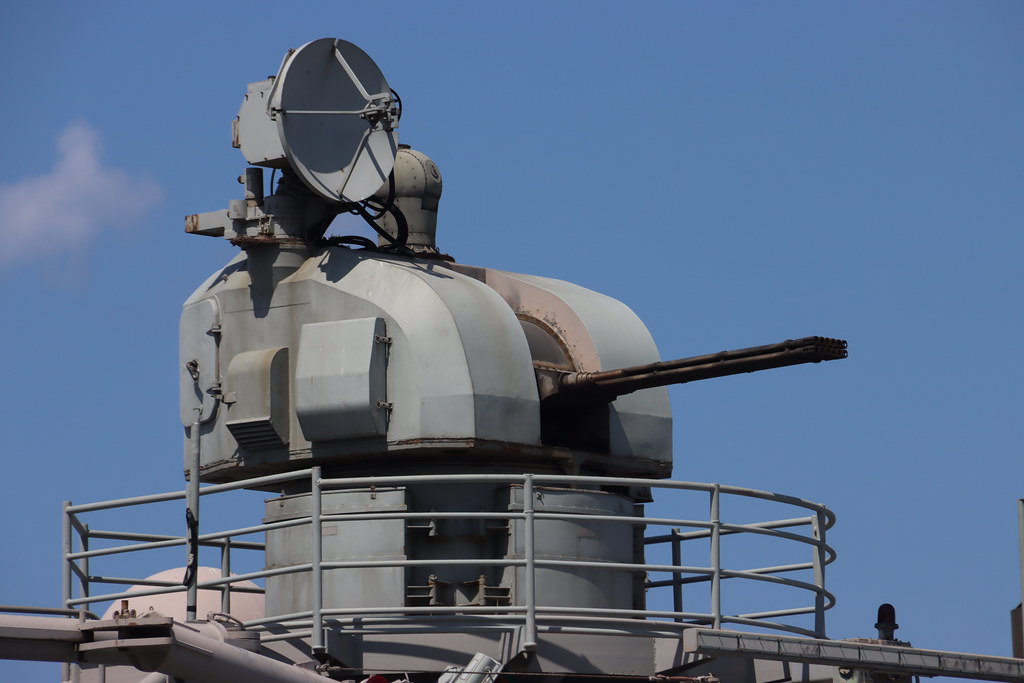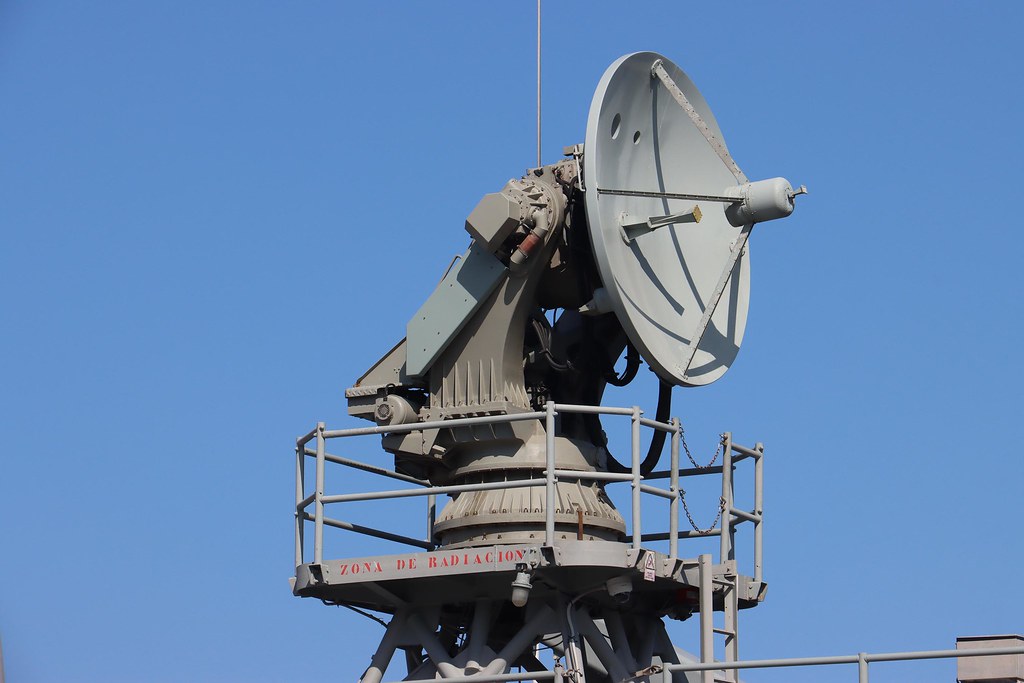The heavy weapons carried on board by the Spanish frigates of the 'Santa María' class
During the recent visit of the "Santa Maria" F-81 frigate to Vigo I had the opportunity to take some photos of its weapons.
The six Spanish frigates of the "Santa María" class (F-80) , based on the American frigates of the "Oliver Hazard Perry" class, entered service between 1986 and 1994 strong>. They are, therefore, veteran ships and will be replaced by the "Bonifaz" class frigates (F-110), the first of which is scheduled for delivery in 2027.

Despite their age, the F-80s are still remarkably well-armed ships. You can see their heavy weapons below, with some information about them, but first a note: all the information included in this post is in the public domain. It would never occur to me to publish any confidential information that could endanger a Spanish Navy ship or any allied country.

Starting at the stern, here we can see the two 12.7mm M-2 Browning machine gun mounts that these ships carry in the stern, behind the flight deck. In this case the machine guns were not placed.

Above the aircraft hangars, these frigates carry a CIWS Meroka anti-missile defense system, with 12 20mm cannons. You can see more images and details about this system at the article I published two days ago. The Meroka is controlled remotely from the ship's Combat Information Center (CIC).

In the central part of the ship there is a 76 mm OTO Melara Mk 75 Gun. The feeding of the barrel is done through mechanisms located below it.

This type of cannon has been used in many warships since 1964, in successive variants. Each cartridge weighs 12.5 kg. The first versions of this gun already had a high rate of fire, up to 85 rounds per minute.

Here we get a better view of the barrel. The 76mm OTO Melara has a range of between 16,000 and 40,000 meters, depending on the type of ammunition used.

In this photo we see the cartridge ejection area, painted in black. It has a curved deflector to direct the expelled cartridges towards the ground. Like the CIWS Meroka, the gun is controlled remotely from the ship's CIC.

One of the two triple 324 mm torpedo launchers that each of these frigates have. Here we see specifically the starboard launcher. It can launch Mk 32, Mk 46 or Mk 50 type torpedoes.

In the bow is the Mk 13 Mod 4 missile launcher. The missiles are loaded from a mechanism located below the launcher. It can launch both Standard SM-1MR medium-range surface-to-air missiles (a total of 32) and RGM-84 Harpoon anti-ship missiles (up to 8).

Missiles are loaded into the launcher via a rail, and once loaded, the missile launcher rotates on its base and points in the direction of the target. Like the Meroka and the OTO Melara 76mm gun, the missile launcher is controlled from the ship's CIC.

In addition to the aforementioned armament, these frigates have active protection systems, including these decoy launchers. These vessels can launch both anti-aircraft decoys (anti-heat-guided missile flares and anti-radar-guided missile chaff) and anti-submarine decoys. What we see are the port launchers.

Fire control is done using the Mark 92 system, the same as in the "Oliver Hazard Perry" class frigates. Here we see the STIR Mk 54 Mod 0 radar antenna that is part of that fire control system. It is located behind the OTO Melara 76 mm gun.

Further towards the bow of the ship we can see this radome, located on top of the command bridge. It is the CAS Mk 53 Mod 0 antenna, also part of the Mark 92 fire control system. This system is used to control the firing of the OTO Melara cannon and the missile launcher.

In the following photo you can see the location of these two antennas on the ship.

|
Don't miss the news and content that interest you. Receive the free daily newsletter in your email: |
- Most read
- The 'hole' without civil flights around Paris during the opening of the Olympic Games
- Stunning footage of the F-15QA Ababil in flight recorded from its cockpit
- The firearms used by the Pontifical Swiss Guard, the smallest army in the world
- The most distant deployment of the Spanish Air Force in Australia and New Zealand
- Eurofighter vs F-35: the opinions of professional pilots on these advanced fighters
- The first photo of an F-16 fighter with Ukrainian insignia and the details it has revealed
- This is the driver station of an M1 Abrams tank and the impressive start of its engine

 ES
ES







Opina sobre esta entrada: